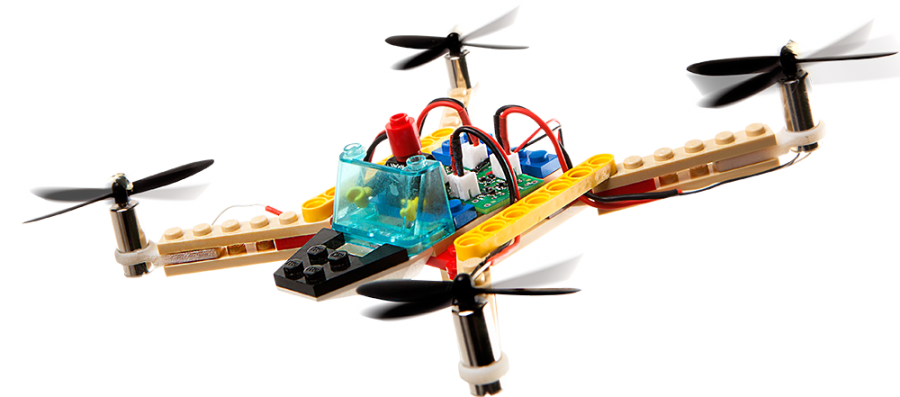San Francisco-based startup Flybrix formally began shipping its crash-friendly LEGO drones on Thursday, September 22. The basic package costs $149 and includes everything the user needs to build a drone skeleton from scratch, to later customize it with as many LEGO pieces as the aircraft can support.
A deluxe package, with a handheld controller, costs $249. The company’s website states that Flybrix is the brainchild of Amir (Hirsch), Robb (Walters) and Holly (Kasun). The first two are scientists, alumni from Caltech and MIT and the latter has an M. A. from UW-Madison and handles most of the entrepreneurial effort.
Flybrix, like LEGO, was a founded as an outlet for creativity, freedom and safe play in both children and adults. Its drones also come with an Arduino-compatible circuit board for open source developing and (according to their website) Flybrix’s technology is also open source.
Never stop creating: the philosophy behind Flybrix
Flybrix basic kit doesn’t include a drone brain, and it must be built by being the user from scratch using all the electronic pieces provided. Both the basic and the deluxe kit include design plans and configuration software and do not require soldering, which makes it suitable for children to work and play unaided by adults.
For the basic kit, a flight-control app (already available online) with two steering controls is responsible for movement. An already mentioned handheld controller takes over this function on the deluxe kit.
The drone’s customizable bits also include the pieces that form the skeleton, which means that users can create drones with four, six or eight motors so that they can be further improved with more LEGO pieces.
Holly Kasun stated that Flybrix and LEGO are not partners, but that all of the pieces are still fully compatible. They were also designed to be extremely light-weight and easily reassembled upon crashing.
Flybrix is meant to be a fun challenge for all users.
The final product of a Flybrix basic kit is a hexacopter with cables running from the center LEGO base, along with LEGO arms and into small (yet sturdy) plastic rotors.
Combining the center plates, many awesome creations can be achieved, such as the second headed drone advertised in a promotional video. Their creators hope that these drones get more and more kids invested in STEM, since assembling a Flybrix also requires programming and technical skills. They are initially meant to be flown indoors.
Source: iTech Post




